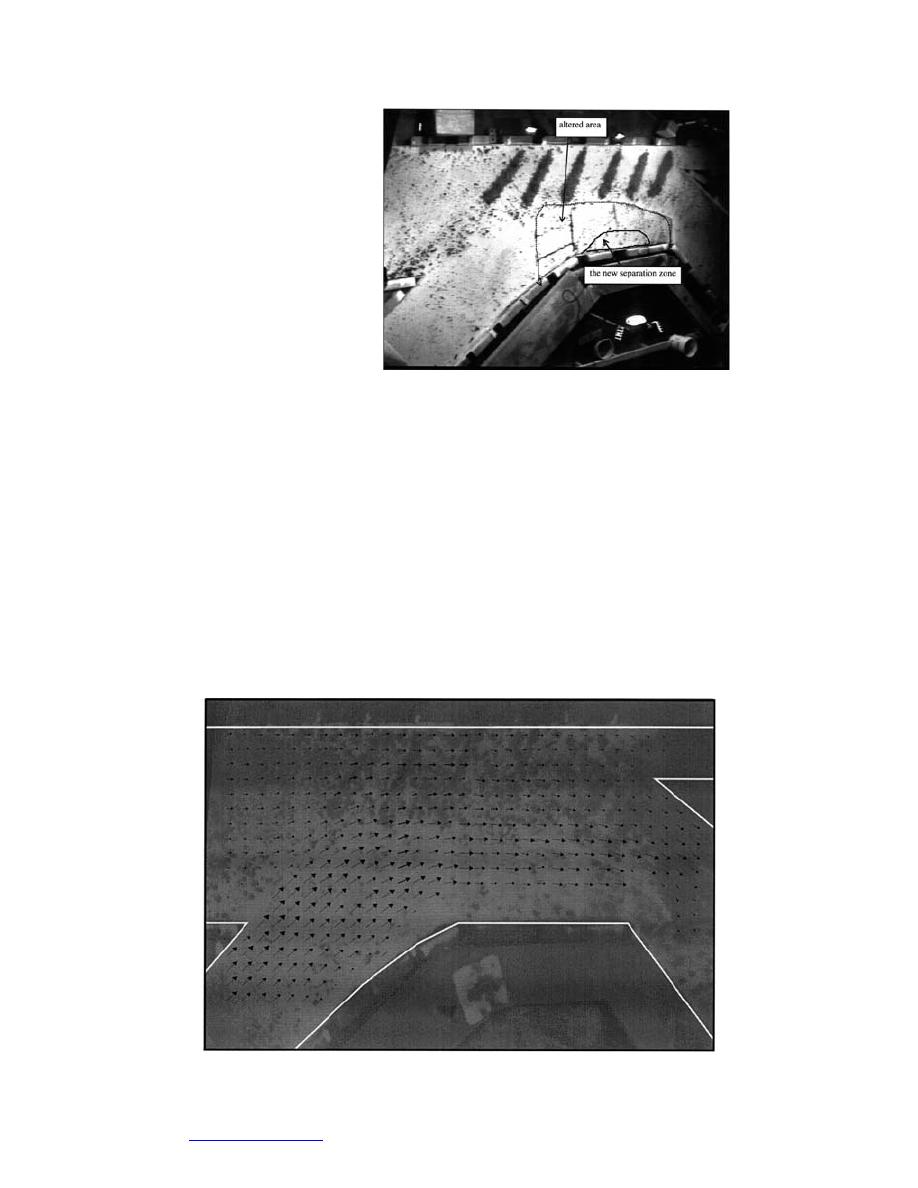
Figure 55 illustrates ice
drift through the conflu-
ence for the reduced bar
size. The vector field of ice
drift velocities is shown in
Figure 56. In summary, ice
moved smoothly through
the confluence without
accumulation. This test,
therefore, confirms the ef-
fectiveness of the series of
bendway weirs.
A reduction in bar size
produced several further
Figure 53. Open water flow through the confluence with
u s e f u l practical conse-
bendway weirs and eroded bar.
quences:
The shift of the confluence thalweg toward the bar causes much less ice to
accumulate in the upstream approach channel leading to the Chain-of-Rocks
Canal. Bar reduction shifts the flow of ice away from the outer bank of the
confluence, causing it instead to flow through the center of the confluence.
This consequence would substantially improve the wintertime navigability of
the confluence, even when ice jams do not form.
The reduction in bar size would be amplified by a commensurate reduction in
the extent of border ice growth in the confluence. This reduction also benefits
the ice transport capacity in the confluence.
The substantially widened flow area through the confluence makes it less likely
for large ice pieces formed in the Mississippi River (downstream of Melvin
Price Lock and Dam) to arch at the confluence with ice from the Missouri
River.
Figure 54. Vector plot of velocities for open water flow in Figure 53.
58
Go to contents page





 Previous Page
Previous Page
